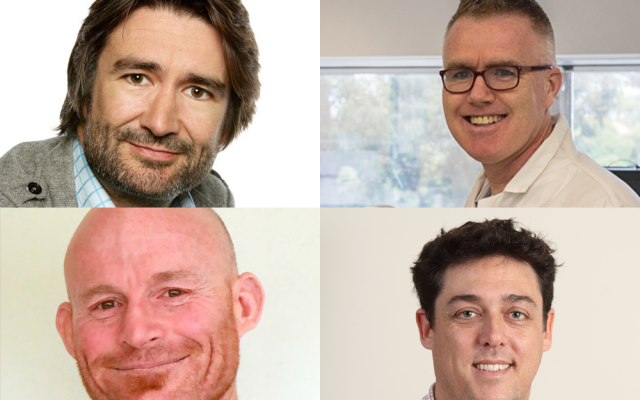Cleaning up the past: UNSW joins campaign against PFAS chemicals
UNSW researchers are working with industry to help deal with pollution in water supplies stemming from places such as firefighting training facilities, airports and industrial sites.
UNSW researchers are working with industry to help deal with pollution in water supplies stemming from places such as firefighting training facilities, airports and industrial sites.

In research worth $3 million, UNSW researchers are collaborating with several industry partners to develop sustainable remediation technologies to clean up emerging contaminants in water.
Although we have known about the problem of chlorinated chemicals in our water supply for some time, just how big a problem we face regarding the proliferation of fluorinated chemicals in our groundwater remains to be seen. Contaminated sites with incredibly high concentrations of these fluorinated chemicals, which include per- and poly-fluoroalkyl substances (PFAS), are being identified not just across our nation, but the whole globe.
The most serious sites of contamination are firefighting training facilities, airports and industrial sites. But because these compounds can travel far and wide, most people will be exposed to small amounts in their day-to-day life through dust, air, food, water and ordinary consumer products such as non-stick frying pans, stain-resistant sofas or even something as innocuous as their waterproof jacket.
The PFAS group of chemicals, which include perfluorooctane sulfonate (PFOS), perfluorooctanoic acid (PFOA) and perfluorohexane sulfonate (PFHxS), have been used for decades, and because they are very stable, they don’t break down in the environment. In the developed world, studies suggest that 95-97% of us have measurable concentrations of PFAS in our bloodstreams.
Although there is no consistent evidence that PFAS exposure is dangerous to humans, concern about the health implications is rapidly growing and in the last few years, legislation has been introduced to limit the amount of PFAS in the environment. This is a positive step, but even though the issue is clearly identified, and regulatory agencies are clamping down, the biggest problem is that there is no easy way to neutralise them.
With few methods available to deal with the ones already contaminating the environment, let alone the ones still being made, the race is on among researchers and industry to figure out how to deal with them in a safe and cost-effective manner.
Enter Professors Mike Manefield and Denis O’Carroll, a large research team from UNSW’s Water Research Centre and approximately $3 million in ARC and industry funding to undertake research that hopes to develop sustainable remediation technologies to clean up these contaminants from groundwater.

The team is focused on two main projects. The first is about generating as much information as possible about the problem and how to utilise biological and chemical approaches to break apart these compounds. The second is about using that information to create a product or process for deployment in the field.
The first project is being led by Manefield, who has a joint appointment across the schools of Civil and Environmental Engineering, and Chemical Engineering. Funded through the ARC (Australian Research Council) Linkage scheme, it is being undertaken in collaboration with Coffey Consulting, a large environmental consulting group and has, Manefield explains, a more fundamental blue-sky research flavour.
“Our key focus is to gain a much better understanding of microorganisms and the biogeochemical processes they perform in relation to fluorinated compounds. To do this we are combining our expertise in microbial and geochemical transformation,” he says.
“Essentially, we are trying to work out what the limitations are to the destruction of these molecules and find ways around these limitations. We know the carbon-fluorine bond is strong but not unbreakable. We have biochemicals that can do the job. The trick is getting that into a microbe which has the advantage of self-replication.”
The second project is led by O’Carroll in collaboration with five industry partners, Orica, Arup, Shimadzu, Enviropacific and the state government of NSW. As an expert in engineered nanoparticles in the environment, particularly in groundwater systems, the problem of how to deal with emerging contaminants (such as PFAS) in the environment is exactly why O’Carroll was successful in his application for an ARC Future Fellowship and the reason for his relocation to UNSW from Canada in 2015.
“In our part of the project, we are hoping to use the information Mike’s team is generating to develop and recommend cost-effective, safe and sustainable management and remediation strategies for contaminated sites,” continues O’Carroll.
“We have only just started, but at this stage, we are optimistic that we’ll find workable solutions within the next three years. All of the science makes sense, so our challenge is to transform theory into practice.”
//